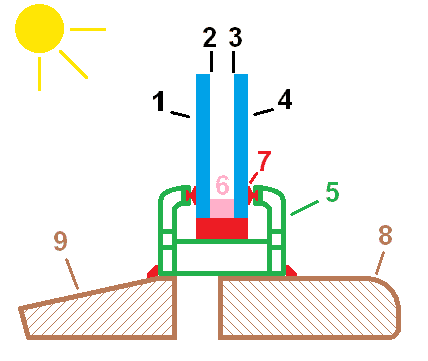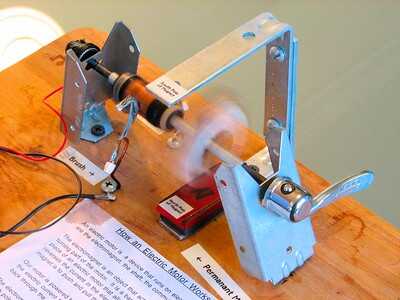5 Examples of Passive Solar Energy Components and Applications
Examples of passive solar energy components and applications are; double-glazing window, daytime lighting passive-solar design, passive water heating, insulated building architecture, ans convective solar space cooling.
This article discusses some examples of passive solar energy, as follows;
1). Double Glazing Window for Space Heating (as one of the Examples of Passive Solar Energy Components and Applications)
Passive solar windows are components of passive solar buildings that are designed to let in an optimal amount of solar radiation, and minimize energy losses from the building [2].
The best windows for passive solar buildings are large, south-facing glass windows, which can allow significant thermal energy from the Sun to enter the building during the day, and will prevent the same heat from being lost at night or other times without sunlight.
South-facing windows are the best for capturing solar energy passively because most of the sunlight received by buildings are projected to the southward side.
A double-glazing window is generally equipped with two glasses that have an air-filled vacuum between them [1]. The double-glass configuration and air gap function as an insulating system that minimizes the rate of heat passage through such windows.
Opening double-glazing windows in the daytime can maximize space heating in a passive solar building. Closing the same windows at night will prevent heat from escaping rapidly from the house while there is no sunlight.
The concept explained above is one of the most simple and common examples of passive solar heating, and it can be useful for buildings in areas and periods in which nighttime temperatures are low.
Double glazing windows for space heating can reduce the demand for electricity, thereby achieving energy conservation and cost-saving. A general description of the attributes of passive solar (double-glazing) windows will include terms like low-emissivity (low-e) and high solar transmission; which respectively refer to the minimization of heat loss and the allowance of daytime solar penetration.

2). Daytime Lighting Passive Solar Design
Passive solar method is useful for daytime lighting, (or daylighting) of buildings.
Visible light is part of the electromagnetic spectrum contained in solar radiation, and can replace artificial lighting during the day. Because of the high intensity of visible light contained in solar radiation, it can be viewed as a most potent natural energy resource for passive daylighting in buildings [4].
Like space heating, the efficiency of lighting application with passive solar energy depends on building architecture, with special reference to window design.
While south-facing windows still capture the maximum solar radiation, passive daylighting for other parts of a building can be optimized by placing apertures at suitable points like the area slightly below the roof, where multiple windows can be inserted to form a clerestory.
Details of passive solar building design can be made to suit the solar radiation conditions of a given site.
Benefits of passive daylighting are; cost saving, mitigation of environmental impacts, and increase in property (building) value [3].

3). Passive Water Heating (as one of the Examples of Passive Solar Energy Components and Applications)
The two main types of passive solar heating are; passive space heating and passive water heating.
Some studies may also list the types of passive solar heating as direct, indirect and isolated passive solar heating.
Passive solar water heating is effective as a means of saving cost in the production of hot water for domestic and industrial purposes. It involves setting-up water vessels so that they are exposed to solar radiation, which they absorb and retain, thereby acting as energy storage systems.
Hot water produced through this absorption and storage process may then be collected using pipes, or circulated to form an active solar heating and cooling system.
The difference between active and passive solar water heating systems is the absence of any external device for auxiliary heating or water circulation; such as a hydraulic pump.
Passive solar water heating depends solely on solar heat, and natural processes like convective heat transmission, to produce hot water. It is therefore most recommendable and effective where there is significant solar intensity.
Advantages of passive solar hot water systems include simplicity, ease of installment and maintenance, and relatively-low cost. They can be of immense value where large volumes of warm-to-hot water are needed.
4). Insulated Building Architecture for Heat Storage
The best insulation for passive homes must comprise of designs and materials that locks heat within closed spaces, and reduces the rate of energy loss.
This included design concepts like the double-glazed window, thermo-retentive walls and floors.
Materials that are used in passive solar buildings for insulation include heat-absorbent brick, wood, stone and concrete, as well as some tiles. These materials improve the heat-retention of such buildings, and thereby makes passive solar applications like heat storage, more effective.
The extent to which insulation improves thermal performance of a passive building depends on both internal and external factors; including building location, climate and solar intensity.
However, insulation considerations in passive building design, reduces the rate of temperature fluctuations, and saves heating-and-cooling cost. It is an important aspect of green building concepts and practices.
5). Convective Solar Space Cooling (as one of the Examples of Passive Solar Energy Components and Applications)
Active and passive solar cooling refer to solar-powered cooling, with and without a working fluid respectively.
Passive solar cooling is a renewable energy approach to the regulation of building temperature, that does not depend on the energy-transfer (or heat-exchange) dynamics of a circulating, working fluid.
The two main ways in which passive solar cooling works are by convective ventilation, and moderation of heat entry.
Heat that enters a building can be moderated and prevented from becoming excessive by the use of double-glazing windows that keep out a significant portion of solar thermal energy when they are shut.
Convective solar space cooling is a passive process that uses density variations of warm and cool air to emit heat from a building.
The warm air is less dense and tends to rise above cool air, so that it may be emitted through well-positioned apertures in the building. At the same time, the continuous fluid-cycle established in the building draws in cool air, which lowers into the building through the apertures by reason of its relatively-high density.
An example of passive solar cooling is the escape of hot air from highly-placed air vents in a building in hot weather. It is called passive solar cooling because the convective circulation and heat removal are driven by the density differences between solar-heated air masses and cool air.
Conclusion
Examples of passive solar energy components, designs and applications are;
1. Double Glazing Window for Space Heating
2. Daytime Lighting Passive Solar Design
3. Passive Water Heating
4. Insulated Building Architecture for Heat Storage
5. Convective Solar Space Cooling
References
1). Ali, H.; Hayat, N.; Farukh, F.; Imran, S.; Kamran, M. S.; Ali, K. (2016). "Key design features of Multi-Vacuum glazing for windows a review." Thermal Science 2016(00):51-51. Available at: https://doi.org/10.2298/TSCI151006051A. (Accessed 18 April 2023).
2). Mori, T.; Ogata, K.; Oosawa, H. (2015). "Design Method of Housing with Direct Solar Heat Gain by Using GIS Data in Cold Regions." Energy Procedia 78:2208-2213. Available at: https://doi.org/10.1016/j.egypro.2015.11.326. (Accessed 18 April 2023).
3). Overen, O. K.; Meyer, E. L.; Makaka, G. (2021). "Passive Solar and Conventional Housing Design: A Comparative Study of Daylighting Energy Efficiency Potential." Frontiers in Energy Research 9. Available at: https://doi.org/10.3389/fenrg.2021.668906. (Accessed 18 April 2023).
4). Overen, O. K.; Meyer, E. L.; Makaka, G. (2021). "Indoor Daylighting and Thermal Response of a Passive Solar Building to Selective Components of Solar Radiation." Buildings 11(1):34. Available at: https://doi.org/10.3390/buildings11010034. (Accessed 18 April 2023).

